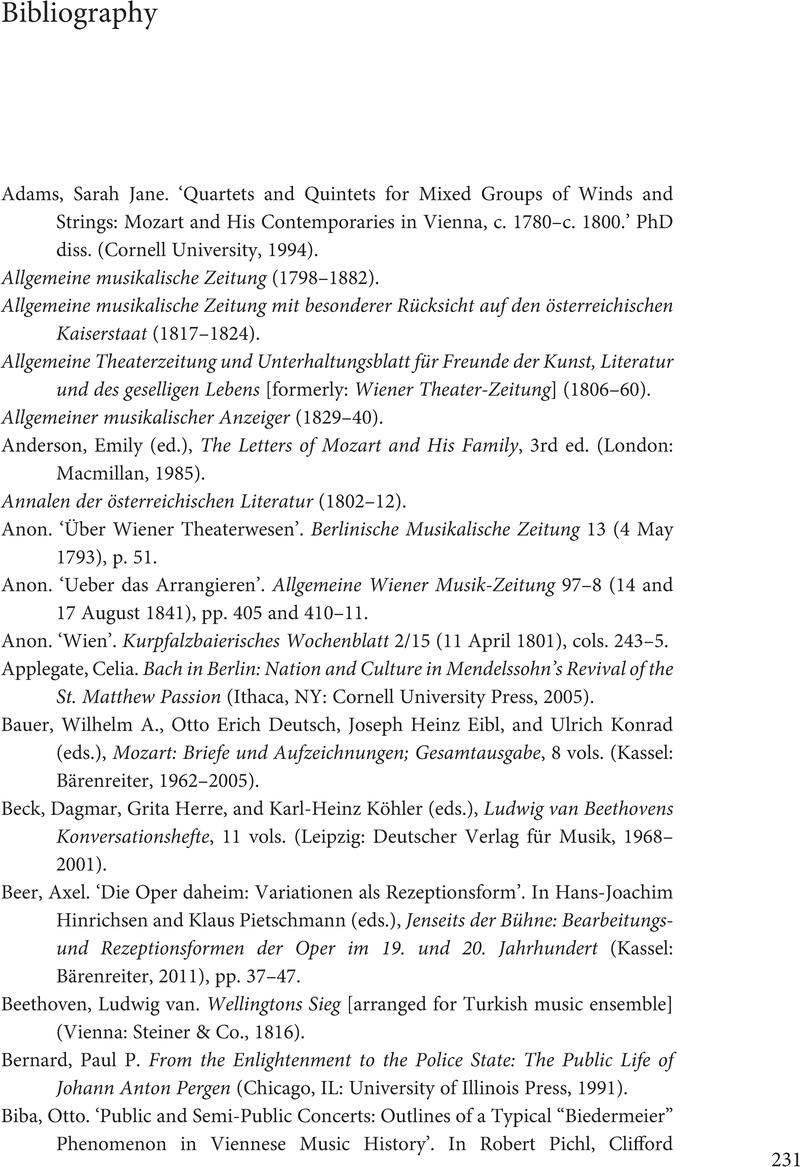Book contents
- Opera in the Viennese Home from Mozart to Rossini
- Opera in the Viennese Home from Mozart to Rossini
- Copyright page
- Contents
- Figures
- Tables
- Musical Examples
- Acknowledgements
- Introduction
- 1 Opera in the ‘Fruitful Age of Musical Translations’
- 2 Kenner und Liebhaber
- 3 Female Agency in the Early Nineteenth-Century Viennese Musical Salon
- 4 Canon Formation, Domestication, and Opera
- 5 Rossini ‘As the Viennese Liked It’
- 6 Industry, Agency, and Opera Arrangements in Czerny’s Vienna
- Bibliography
- Index
- References
Bibliography
Published online by Cambridge University Press: 18 February 2024
- Opera in the Viennese Home from Mozart to Rossini
- Opera in the Viennese Home from Mozart to Rossini
- Copyright page
- Contents
- Figures
- Tables
- Musical Examples
- Acknowledgements
- Introduction
- 1 Opera in the ‘Fruitful Age of Musical Translations’
- 2 Kenner und Liebhaber
- 3 Female Agency in the Early Nineteenth-Century Viennese Musical Salon
- 4 Canon Formation, Domestication, and Opera
- 5 Rossini ‘As the Viennese Liked It’
- 6 Industry, Agency, and Opera Arrangements in Czerny’s Vienna
- Bibliography
- Index
- References
Summary

- Type
- Chapter
- Information
- Opera in the Viennese Home from Mozart to Rossini , pp. 231 - 246Publisher: Cambridge University PressPrint publication year: 2024

